Beijing, Xi'an, Kunming, Dali, Lijiang
and Shanghai in a Package

|
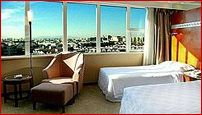
Tiantan Hotel, Beijing    
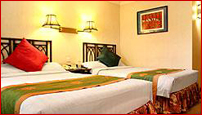
Jianguo Hotel Xian    
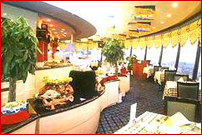
Jinjiang Hotel, Kunming    
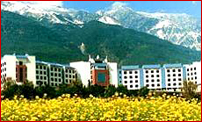
Asia Star Hotel, Dali    

Adange Hotel Lijiang    

Holiday Inn Downtown
Shanghai    
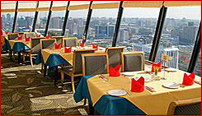
Beijing International Hotel     

Sheraton Hotel Xian     
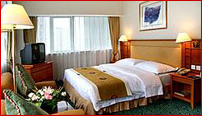
Harbor Plaza Hotel Kunming     
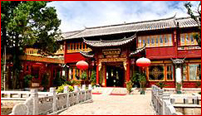
Wangfu Hotel Lijiang    

Grand Pacific Hotel shanghai
    
|
|
Beijing-Xi’an-Kunming-Dali-Lijiang-Shanghai
15 days 14 nights package
Beijing and Xi'an probably has one of the most
cultural attractions of all of China. Beijing, having
500 years, and Xi'an having 1500 years of history,
these two cities are a must-see. in Kunming and
Dali, enjoy a quick getaway to great air and climate
year round. Here you can relax and forget about
any problems one may have. Lijiang is a place to
enjoy the Naxi ethnic groups' precious culture.
On this tour we also added Shanghai to see the difference
as Shanghai is a very young city compared to the
two with about 20 years of development.
In Beijing, this tour will take you to all major
attractions no one can miss; including the Great
Wall, Ming Tombs Tiananmen Square, Forbidden City,
the Summer Palace, and Temple of Heaven. We will
also take you to one of the biggest Silk Alley to
be able to purchase and view the great quality Silk
of China. The last portion of this tour will also
take you to the Beijing Zoo to be able to see the
Pandas.
And of course for Xi'an is the Terra Cotta Warriors.
we will take you for a whole day in Xi'an allowing
you to spend much of your time to observe the three
pits. Following day we will take you to the Big
Wild Goose Pagoda. See the 1500 years of culture
and existence of Xi'an and sink yourself into the
past...
Kunming enjoys a pleasant climate and does its
best to live up to its title of 'the City of Eternal
Spring'. Whenever you are planning to go, the temperature
is always pleasant. With its convenient transport
links in and out of the city, Kunming welcomes and
sees off tens of thousands of tourists every day.
Dali, a city of great antiquity, beckons the
visitor in any season and is always a tempting destination
for those interested in exploring fascinating natural
scenery and the area's considerable historical and
cultural heritage. It is renowned as a land of wonders,
both natural and manmade, inspiring in visitors
a great appetite for its beauty.
Splendid landscapes, the exotic ways of the Naxi
ethnic group and the precious Dongba Culture make
up the unique city of Lijiang. Each year it attracts
a great number of visitors from home and abroad.
To find a fairyland far from the bustling metropolises.
Finally, you will be taken to the largest
city of China; Shanghai. Here you can see many newer
built and designed architecture where the
New China resides. While driving through Shanghai,
you will be taken to the old parts of Shanghai; visiting the Jade Buddha Temple, the Yuyuan
Garden and Shanghai Museum. These are historical
sites of Shanghai before it became the fast growing
city of China.
Highlights:
• Explore the exotic ethnic
minority villages of lush tropical southwest
China in Lijiang and Dali
• Visit Beijing, China’s capital city, and home
to the Forbidden City, much of the Great Wall,
and other top attractions
• Experience the jaw-dropping wonder of the
Terracotta Warriors in Xian, China’s ancient
capital and “valley of the kings”
• Visit Shanghai, China’s most cosmopolitan city
and all the excitement and vibrancy it has to
offer
• Take some time in Kunming, the “City of
Eternal Spring” , and the gateway to southeast
Asia, wile also going to Jade Dragon Snow
Mountain, China's best ski resort
Standard
Tour and Luxury Tour Packages Available.
B=breakfast;
L=lunch; D=dinner Departure:
Upon booking
|
|
|
| |
STANDARD TOUR ITINERARY |
 |
Tour code:
P-BXKDLS |
|
| Day |
Activities included in Package |
|
Hotel |
|
| DAY 01 |
Arrive in Beijing
Upon arrival at the Beijing airport, you
will be me by your local
English-speaking guide, and he will take
you to your hotel, the Tiantan Hotel, a
4 star hotel located in downtown
Beijing. If time permits, we can get
started with some sightseeing, but if
not, you are free to spend the night at
your own leisure, and resting up for the
days ahead.
|
|
Tiantan Hotel
    |
|
| DAY 02 |
Beijing (B, L)
After breakfast in the hotel, we’ll make
the short drive outside the city to the
Great Wall at Badaling. Badaling was the
first section of the Great Wall to be
opened to the public in 1957, and is
therefore the best known among visitors.
Badaling was the site of U.S.
President’s Richard Nixon’s visit to the
Great Wall on his historic trip to
China, and is a popular choice for
celebrities, foreign dignitaries and
leaders (U.S. President Obama visited
Badaling in November of 2009). Badaling
also offers incredible views of the wall
winding and twisting along the hills.
After a delicious lunch we will make the
short journey by minibus to the Ming
Tombs.
The Ming Tombs, about 50 km/31 miles
from Beijing, are where 13 emperors of
the Ming Dynasty (1368-1644) are buried.
This site was carefully chosen for its
feng shui principles by the third Ming
emperor Yongle (who also moved the
capital from Nanjing to Beijing and
began construction on the Forbidden
City). The tomb we will visit, Dingling,
is the tomb of the Wanli Emperor. It is
the only one of the Ming Dynasty Tombs
to have been excavated. It also remains
the only imperial tomb to have been
excavated since the founding of the
People's Republic of China. After
viewing the tombs, we will head to the “Shenlu”,
or the Spirit Way. The Spirit Way leads
into the complex, lined with statues of
guardian animals and officials, with a
front gate consisting of a three-arches,
painted red, and called the "Great Red
Gate". The Spirit Way, or Sacred Way,
starts with a huge stone memorial
archway lying at the front of the area.
Constructed in 1540, during the Ming
Dynasty, this archway is one of the
biggest stone archways in China today.
You will then be dropped of at the
hotel, and the rest of the evening can
be spent at your discretion
. |
|
Tiantan Hotel
    |
|
| DAY 03 |
Beijing (B, L)
After breakfast in the hotel we will
head over to the center of Beijing,
Tiananmen Square. The largest public
square in the world, Tiananmen Square is
seen as China’s political center. Its
grounds have seen some turbulent
moments, from the May 4th Movement of
1919 to the political turmoil of 1989.
The south of the square is marked by the
Chairman Mao Memorial Hall, while the
center of the square is dominated by the
Monument to the People’s Heroes, an
imposing 10-story granite obelisk. To
the east is the National Museum of
China, and to the west is the Great Hall
of the People, home to China’s
legislative bodies. The north of the
square is dominated by the Gate of
Heavenly Peace, known for its iconic
portrait of Mao Zedong, and is the
national emblem of China.
After walking across the street, we will
enter what is perhaps the greatest
attraction in China, the Forbidden City.
After walking across the square we will
enter the Forbidden City (known in
Chinese as Gu Gong), the largest
surviving palace complex and the former
home of the emperors of the Ming and
Qing Dynasty. The Forbidden City is one
of the greatest attractions in the
world. Built by the third Ming emperor
between 1406-1422, the Forbidden City
served as the official residence to the
Emperor of China until the last emperor,
Puyi, was forced to evacuate in 1924.
The Forbidden City is divided into two
parts. The southern section, or the
Outer Court was where the emperor
exercised his supreme power over the
nation. The northern section, or the
Inner Court was where he lived with his
royal family. Consisting of 980
buildings and with 8,707 bays of rooms,
the Forbidden City is the best example
of classical Chinese architecture in the
world, and is a wonder to behold.
To continue our theme of imperial
royalty, we’ll go from the Forbidden
City to the royal family’s retreat from
the Forbidden City, the Summer Palace.
Being northwest of the city center, the
Summer Palace has the largest royal park
and being well preserved, the Summer
Palace is ranked amongst the most noted
and classical gardens of the world. In
1998, UNESCO listed it as one of the
World Heritage Sites. Like most of the
gardens of Beijing, it could not elude
the rampages of the Anglo-French allied
force of 1860 and was destroyed by fire.
In 1888, Empress Dowager Cixi embezzled
navy funds to reconstruct it for her own
benefit, changing its name to Summer
Palace (Yiheyuan). She spent most of her
later years there, dealing with state
affairs and entertaining.
Highlights not to be missed are climbing
Longevity Hill, viewing the Empress
Dowager Cixi’s extravagant Marble Boat,
and talking a walk down Suzhou jie, a
canal meant to resemble the beautiful
river city of Suzhou.
You will then be dropped off at your
hotel for the evening.
|
|
Tiantan Hotel
    |
|
| DAY 04 |
Beijing-Xian (by train) (B, L)
Following breakfast we’ll make the short
drive to the Temple of Heaven park. The
complex was visited by the Emperors of
the Ming and Qing dynasties for annual
ceremonies of prayer to Heaven for good
harvest. The Temple of Heaven park is
best known for the Hall of Prayer for
Good Harvests, an iconic building famed
for its magnificent triple-gabled
circular roof. You will also have an
opportunity to walk the same imperial
walkway that the same emperors walked
hundreds of years ago in their holy
rites. You will also see Beijing’s
senior citizens using the park grounds
for everything from tai chi and ballroom
dancing to bullwhip practice!
Next you will have the chance to get
some great bargains on clothing at
Xishuiyu Street. Xiushui Street is one
of the famous clothing markets in
Beijing. It attracts domestic and
foreign tourists with varied styles,
colors and materials as well as an
inexpensive price. Remember to always
haggle, as you can regularly get 50% off
the asking price. If you need some help
your guide is more than happy to help!
Following your visit to the Temple of
Heaven, you will be driven to the
Beijing train station, and you’ll take
an overnight train to Xian. You will be
in a soft-sleeper compartment, so your
train journey will be both peaceful and
comfortable.
|
|
On the train to Xian from
Beijing |
|
| DAY 05 |
Xian (B, L)
You will arrive at the Xian train
station in the morning, and upon arrival
you’ll be met by your local
English-speaking guide. You’ll then be
taken to Xian’s greatest attractions,
and one of the greatest sites in all of
China, the Terracotta Warriors and
Horses Museum. The Terra Cotta Warriors
and Horses Museum is the result of the
most significant archeological
excavations of the 20th century. Work is
ongoing at this site, which is around
1.5 kilometers east of Emperor Qin Shi
Huang's Mausoleum. It is a sight not to
be missed by any visitor to China. Upon
ascending the throne at the age of 13
(in 246 BC), Qin Shi Huang, later the
first Emperor of all China, had begun to
work for his mausoleum. It took 11 years
to finish. It is speculated that many
buried treasures and sacrificial objects
had accompanied the emperor in his after
life. A group of peasants uncovered some
pottery while digging for a well nearby
the royal tomb in 1974. Life size
terracotta figures of warriors and
horses arranged in battle formations are
the star features at the museum. They
are replicas of what the imperial guard
should look like in those days of pomp
and vigor.
The museum is divided into three
sections: No. 1 Pit, No. 2 Pit, and No.
3 Pit respectively. They were tagged in
the order of their discoveries. No. 1
Pit is the largest, first opened to the
public on China's National Day, 1979.
There are columns of soldiers at the
front, followed by war chariots at the
back. No. 2 Pit, found in 1976, contains
over a thousand warriors and 90 chariots
of wood. It was unveiled to the public
in 1994. Archeologists came upon No. 3
Pit also in 1976. It is the command
center of the armed forces. It went on
display in 1989, with 68 warriors, a war
chariot and four horses.
Following our visit with the Terracotta
Warriors, we’ll then step back to an
even earlier time at the Banpo Neolithic
Museum. Located in the eastern outskirts
of Xi’an city, the Banpo Museum is the
first prehistoric excavation site museum
in China. Banpo (half slope) Village was
a typical Neolithic Matriarchal
community of the Yangshao (Respect
Splendid) culture (5000-3000 BC) around
6000 years ago. The Yangshao culture was
named after the first discovery of this
civilization in Yangshao, Henan
Province. About 400 sites of this type
have been discovered around the Yellow
River Basin, and the Banpo site is the
largest one. The site was discovered in
1953 during the construction of a power
plant. The excavation work lasted four
years, and the Banpo site was first
opened to the public in 1958. Since
then, two million people have visited
it.
The Banpo site, occupying an area of
approximately 50,000 square meters, was
divided into three parts: the living
area, the pottery making area and the
cemetery area. Among the ruins are 46
dwellings, two domestic animal pens and
over 200 storage pits, 174 adult tombs,
73 burial jars for kids, six pottery
making kilns and many production and
domestic tools. The site delivers
visitors a vivid picture of the long ago
lifestyle of the primitive Banpo people.
After visiting the Banpo Museum you’ll
be taken to your hotel, the 4 star
Jianguo Hotel, which is just a 15 minute
walk to the old city center.
|
|
Jianguo Hotel, Xian
    |
|
| DAY 06 |
Xian-Kunming (B, L)
After breakfast we’ll make the short
drive to the Big Wild Goose Pagoda, a
pagoda surrounded by a still functioning
Buddhist temple (named Da Ci’en Temple).
The Big Wild Goose Pagoda is one of the
most famous Buddhist pagodas in China.
The Pagoda was built in the Tang Dynasty
(618-907) for the study of Buddhist
scriptures. Although it has been
attacked by centuries of weather, war
and seismic activity, which destroyed
most of the original material of the
structure, a pagoda by this name and
style still exists on the site. The Tang
regime gave orders to build a chamber
for the translation of Buddhist
scriptures in an effort to have the then
widely renowned Master Xuanzang agree to
be the head of the temple. Xuanzang was
a Buddhist monk who traveled to India,
translated Sanskrit scriptures and
developed theories of consciousness,
karma and rebirth that were adopted by
some later popular schools of Buddhism.
The hallowed pagoda is an architectural
marvel. It was built with layers of
bricks without any cement. The bracket
style used in traditional Chinese
architecture was also used in the
construction of the pagoda. The seams
between each layer of bricks and the "
prisms' on each side of the pagoda are
clearly visible. The grand body of the
pagoda with its solemn appearance,
simple style and high structure, is
indeed a good example of Chinese
traditional architecture.
Then you can unwind a bit by taking a
leisurely stroll on the Xi’an City Wall.
It's the most complete city wall that
has survived in China, as well being one
of the largest ancient military
defensive systems in the world. Xi'an
City Wall was erected in the 14th
century Ming Dynasty, under the regime
of Emperor Zhu Yuanzhang. When Zhu
Yuanzhang captured Huizhou, long before
the establishment of the Ming Dynasty,
he was admonished by a hermit named Zhu
Sheng, who told him to "build high
walls, store abundant provisions and
take your time in proclaiming yourself
emperor." If you like, you have the
option of renting a bike or a rickshaw
on the wall in order to cover more
ground in a shorter time.
In the late afternoon, you’ll be driven
to the Xian airport, where you’ll have
an evening flight to Kunming, the
capital of Yunnan province. Upon arrival
at the Kunming airport, you will be met
by your guide, who will take you to your
hotel. Your lodging will be the 4 star
Plaza Jinjiang Hotel.
|
|
Jinjiang Hotel, Kunming     |
|
| DAY 07 |
Kunming-Dali (B, L)
Following breakfast in the hotel, we’ll
get started on the day’s sightseeing by
driving outside the city to the Stone
Forest Scenic Resort. Being one of the
National Scenic Resorts in China, Stone
Forest Scenic Resort is 83km from
Kunming and has a complete range of
karst formations. Among the most
wonderful attractions in this area are
the following eight scenic spots: Large
& Small Stone Forests, Naigu Stone
Forests, Large & Small Zhiyun Caves,
Qingfeng Cave, Long Lake, Moon Lake,
Fairy Lake, Feilong Falls. Standing
upright in the Stone Forest are
innumerable cliffs and peaks, lofty and
majestic, steep and precipitous,
charming and enchanting.
From afar, it really looks like a dense
forest but as you walk closer, you will
find "trees" are all slender stone
pinnacles. The sight is vast covering
some 350 kilometers. The Yi and Sani
ethnic group who live there are
hardworking and good at singing and
dancing. Their folklore and culture are
colorful and multifarious, backed up by
a long history.
Then we’ll head over to the Golden
Temple Park. It got its name because it
is the largest and highest well
preserved temple built of gold and
copper. The most interesting attractions
in the Golden Temple Park are the Taihe
Palace and the Golden Temple. At the
front gate, is a large horizontal board
inscribed with the Chinese characters
"Ying Wu Chun Shen", meaning "Spring
abounds on Yingwu Mountain".Help us to
change this description.
You’ll then be taken to the city train
station, where you will take an
overnight train to Dali, an autonomous
prefecture that is also in Yunnan
province, As before, you will have a
soft sleeper cabin.
|
|
On the train to Dali |
|
| DAY 08 |
Dali (B, L)
When you arrive at the train station in
the morning, you’ll be met by your local
guide. Your hotel will be the 4 star
Asia Star Hotel, and you’ll have a
little bit of time to freshen up.
Afterwards, we’ll drive out to the Erhai
Lake Park, otherwise known as Eryuan.
Erhai Lake is the largest highland lake
next to Dianchi and one of the seven
biggest fresh water lakes in China. It
means, 'sea shaped like an ear', in
Chinese. Implying that the lake is ear
shaped and as large as a sea, hence it
was so named. The lake covers an area of
250 square kilometers and is located
about two kilometers east of Dali. The
surrounding islands, temples and
villages are worth visiting too. Golden
Shuttle Island (Jinsuo Dao), and the
nearby fishing community of Bai Minority
do really deserve a visit with its
attractive Bai culture and lifestyle,
and because of the rare beauty of the
lake and its surrounding scenery.
You’ll then make the short walk to visit
the premier attraction of Dali, the
Three Pagodas. The Three Pagodas of Dali
are famous in China for their size,
beauty, and antiquity, and for their
preservation. The central one is more
than 1,100 years old and is one of the
tallest pagodas ever built in China.
These pagodas are situated between
Cangshan Mountain and Erhai Lake, about
1.5 kilometers (.9 of a mile) northwest
from the ancient city of Dali. The Three
Pagodas are cream-colored,
delicate-looking pagodas. They are
situated in the shape of a triangle. The
tallest and oldest of the three was
built during the reign of a king of the
Nanzhao Kingdom about 1,150 years ago.
The other two were built about 100 years
later, probably by the Kingdom of Dali.
They are made of brick. They stand at
the foot of one of the high peaks of
nearby Cangshan Mountain named Yinglo
Peak. The tallest pagoda is one of
China's best preserved buildings from
the time of the Tang Dynasty, and the
smaller two pagodas differ in style.
Then we’ll take a stroll through time in
the Dali ancient town. The ancient city
of Dali is one of Yunnan's most popular
tourist destinations. When visiting the
area you can see temples and
architecture 1000 years old, buy
beautiful souvenirs and objects of art,
and learn about the history of the area
and of the native peoples. The local
customs and architecture is distinctive.
A stroll through the ancient city with
its stone paved streets, traditional
style houses, and numerous gardens is an
interesting excursion.
You’ll also get the chance to walk down
Foreigner Street, which contains
Western-style restaurants and bars and
English-speaking business owners. The
street is popular with both foreigners
and Chinese, and is known as a
backpackers’ haven.
|
|
Asia Star Hotel, Dali
    |
|
| DAY 09 |
Dali-Lijiang (B, L)
In the morning following breakfast, we
will make the drive to Lijiang, which is
located in the northwest of Yunnan
province. The cultural and historical
attractions in Lijiang County are the
Naxi and Bai towns and the ancient
districts of the city of Lijiang. Three
ancient districts of the city of Lijiang
became a UNESCO World Heritage area in
1997. We’ll stop to visit a local market
of the Naxi people, where you’ll have
the chance to peruse the crafts and art
products that they offer.
Next you’ll have the chance to add some
color to your life with some tie-dying
at Zhoucheng, the biggest town of Bai
people in Dali. There in the Town live
altogether more than 1,500 Bai families.
In the town you can see typical houses
of Bai people with close courtyards,
"three rooms and a shining wall", and
"four rows of houses and five
dooryards".
For some of the houses, one family makes
one courtyard; while others have several
courtyards in one family. These houses
have a plane of a square. The roof
contains two layers of eaves made from
green tiles, and is designed in the
shape of the Chinese character . There
are three to five major rooms which are
facing east or south. They are built
with bricks and stones with the wooden
frame. The wooden frame is assembled
through tenons. One courtyard, and
sometimes several courtyards, connect
with each other and make a whole. The
walls outside are washed with lime
upside and fine mud downside.
We’ll continue our exploration of the
Bai people in the little town of Xizhou.
Xizhou is a now a quiet town with a
population of about 32,000 people.
Though now it is surrounded by rice
paddies and is mainly known for the well
preserved Bai traditional houses, many
times it has been important in Chinese
history. During this century, it was a
haven for Chinese intellectuals and a
leading university was located here,
fleeing the Japanese invasion. Before
1949, Xizhou was the main center for Bai
commerce, and many families were
extremely rich. The best examples of
Qing Dynasty era Bai architecture can be
found here. Xizhou has about 200
national heritage listed private houses
dating from the Qing Dynasty. The houses
are among the best examples of
traditional Qing architecture in China
and are exquisitely detailed. By
visiting this small town, you gain a
better understanding of the history of
this ingenious people and an
appreciation of a culture that has been
important in Chinese history.
For the night you’ll be staying at the 4
star Adange Hotel.
|
|
Adange Hotel
Lijiang     |
|
| DAY 10 |
Lijiang (B, L)
Today you will have a full day to
further investigate the town of Lijiang,
and all the diverse culture and
attractions it has to offer. First,
you’ll have the opportunity to get
better acquainted with the Naxi people
at the village of Baisha. Baisha Old
Town is one of the oldest towns in
Lijiang. It is the earliest settlement
of the Naxi people and is the birthplace
of "Tusi", chief of the Mu clan. In the
town there are many ancient buildings
built during the Ming Dynasty, including
Dabaoji Palace, Liuli Temple, and
Wenchang Palace. The well-known Baisha
Frescoes are located in Dabaoji Palace.
Because of the white sand on the ground,
the town was named "Baisha", which means
"white sand". In the Naxi language, it
is called "bengshi". The architectural
complex is made up of two parts, folk
residence and cultural sites. The folk
residence is called "pengshizhi" which
in the local language means "Baisha
Streets". The streets all go from south
to north. In the center of the old town
there is a square where three
thoroughfares intersect. Houses and
small stores stand on the both sides of
these streets. A crystal clear stream
winds around all the houses flowing
through the small town from north to
south.
The center of town features a beautiful
rendering of frescoes religious
frescoes. The 44 pieces of Baisha
frescos were drawn in the early Ming
Dynasty. Most of the paintings are about
religious stories of Taoism, Buddhism,
and Tibetan Buddhism. The murals embody
the artistic characteristics of the Naxi,
Tibetan, Han and Bai ethnic groups.
Among them the paintings about Kwan-yin
and Sakyamuni are the most famous ones.
Now Baisha Frescos, also known as Lijing
Frescos have become precious data for
the study of China's history of arts and
religions.
Well next explore another minority
village at Yuhu, the last village in the
Lijiang Basin at the foot of Jade Dragon
Snow Mountain. The houses were made of a
unique stone called "monkey head" by
Naxi people. The stone is something
between stone and mud. With the
reflction of the stone on the snow
mountain, houses made of :monkey head"
look even more natural and
beautiful.There is a Yuhe Lake beside
the village. Water in this lake comes
from he melted snow in the mountains.
The holy water from this holy mountain
of the Naxi makes this small village
very mysterious. That is why Joseph Rock
chose this place to live in when he came
in 1922. He lived in Lijiang for 27
years. We can still find houses and
things that he used when he lived in
Yuhe Village.
From 1924, a great number of photos and
articles that he had taken and written
about Lijiang were published in National
Geography, an authorative magazine in
the U.S. He introduced the wonderful
scenery of west Yunnan to the western
countries, as Rock loved Lijiang very
much. He wrote to his friends before his
dying in 1962 that he'd rather die in
the flowers of Jade Dragon Snow Mountain
in Lijiang than lie alive on his sickbed
in Hawaii.
You have the rest of the afternoon to
walk around the old town of Lijiang. The
old town is made up of three old
districts that retain a special
character of Naxi and Han construction
and Naxi customs, arts and culture. It
was a former trading town and a stop for
traders carrying goods on the “Chama
Road” trails. It was listed as a UNESCO
World Heritage Site in 1997 following an
earthquake and reconstruction in 1996
that returned the city to a more ancient
look. The UNESCO description says: “The
Old Town of Lijiang, which is perfectly
adapted to the uneven topography of this
key commercial and strategic site, has
retained a historic townscape of high
quality and authenticity.
Its architecture is noteworthy for the
blending of elements from several
cultures that have come together over
many centuries. Lijiang also possesses
an ancient water supply system of great
complexity and ingenuity that still
functions effectively today.” The
landscape is dramatic, and the Chama
Road was important historically for the
development of the cultures and people
of Southeast Asia, China and the
Himalayan Region. Now, the small city
has been commercialized and millions of
tourists visit every year, but three
ancient districts are somewhat
preserved.
|
|
Adange Hotel
Lijiang     |
|
| DAY 11 |
Lijiang-Kunming (B, L)
In the evening you will take an
overnight soft sleeper train back to
Kunming, but first we will visit the
Jade Dragon Snow Mountain ski area. The
Jade Dragon Snow Mountains are a small
group of peaks close to the city of
Lijiang. The nearest slope is only about
30 kilometers north of the Dayan Ancient
City District, and the mountain can be
clearly seen from the Black Dragon Pool
next to the ancient district. The group
of mountains is notable because they
contain a small ski area, good hiking
along Tiger Leaping Gorge, great scenic
views, and a 15,000 foot mountain with a
specially built stairway and path to
make climbing to the summit easy. If
you’d like to climb to the top of a high
mountain, that might be one to try.
There is no sliding on steep paths or
climbing with your hands, the distance
from the tram is short, and oxygen tanks
can be rented for a little more than 4
dollars USD. But the view is excellent!
The tallest peak called Shanzidou has
only been climbed once by two Americans
who say it is extremely dangerous. The
Yangtze River runs through Tiger Leaping
Gorge in the valley below. The mountains
are a place to go to in Yunnan for
skiing or fun in the snow in the winter
and for hiking and enjoying the natural
scenery the rest of the year.
After visiting Jade Dragon Snow Mountain
you’ll be taken by bus back to Dali, and
from there you will take your overnight
train to Kunming.
|
|
On the train to Kunming |
|
| DAY 12 |
Kunming-Shanghai (B, L)
After your morning arrival in Kunming,
you’ll be met by your English-speaking
guide. After arriving you’ll be taken to
the World Horticultural Exposition
Garden. The World Horticulture Expo
Garden is 218 hectares in area, 2.5 km
in length, and 1.1 km in width. In the
garden you can find 5 big exhibition
halls (China Hall, the Man and Nature
Hall, the Green House, the Science and
Technology Hall, and the International
Hall), 6 theme gardens (the Tree Garden,
the Tea Garden, the Bonsai Garden, the
Medicinal Herb Garden, the Bamboo
Garden, and the Vegetable and Fruit
Garden), 3 outdoor showplaces (the
International Outdoor Exhibition Area,
the Domestic Outdoor Exhibition Area,
and the Exhibition Area for
Enterprises), and 2 big squares (Century
Plaza, and the Performance Plaza).
The theme of this exposition garden is
"Man and Nature, marching into the 21st
century". The 34 Domestic Outdoor
Exhibition Area is spacious and
magnificent. It is home to many diverse
gardens from the 31 provinces of China,
autonomous regions, municipalities
directly under the Central Government,
Hong Kong and Macau.
Following yours troll through the
garden, you’ll be taken to the Kunming
airport, where you will make an
afternoon flight to Shanghai. Upon
arrival, you’ll be met by your Shanghai
guide. Your hotel during your stay in
Shanghai will be the 4 star Holiday Inn
Downtown.
|
|
Holiday Inn Downtown
Shanghai     |
|
| DAY 13 |
Shanghai (B, L)
Following breakfast, we’ll start our day
in Shanghai with a visit to the Jade
Buddha Temple. The Jade Buddha Temple is
one of the richest and most frequented
Buddhist Temples in Shanghai. Jade
Buddha Temple in Shanghai is an active
temple, with 70 resident monks at the
last count. The 70 monks who live and
work there can sometimes be seen
worshiping. inside, the centerpiece is a
1.9-meter-high white jade Buddha, which
was installed here after a monk brought
it from Burma to Zhejiang Province in
1882. The seated Buddha, encrusted with
jewels, is said to weigh about one
thousand kilograms. A smaller, reclining
Buddha from the same shipment lies on a
redwood bed. In the large hall are three
gold-plated Buddhas, and other halls
house ferocious-looking deities.
Artifacts abound, not all on display,
and some 7,000 Buddhist sutras line the
walls.
Afterward you’ll have a chance to stroll
along Yuyuan Garden. Yuyuan Garden is a
famed classical garden, and even though
it may be small, it contains numerous
pavilions, halls, rockeries, ponds and
cloisters, and all have unique
characteristics. There are six main
scenic areas in the garden: Sansui Hall,
Wanhua Chamber, Dianchun Hall, Huijing
Hall, Yuhua Hall and the Inner Garden.
Each area features several scenic spots
within its borders.
Following a Chinese lunch we’ll cap off
our day of touring with a visit to the
city premier museum, the Shanghai
Museum. The Shanghai Museum is a world
famous museum of ancient Chinese art and
culture. The exterior design of the
round dome and the square base
symbolizes the ancient idea of a round
heaven and a square land. The museum is
divided into eleven galleries and three
exhibition halls. The eleven Galleries
cover most of the major categories of
Chinese art: Ancient Bronze, Ancient
Ceramics, Paintings, Calligraphy,
Ancient Sculpture, Ancient Jade, Coins,
Ming and Qing Furniture, Seals, and
Minority Nationalities. The museum is a
wonderful primer on ancient Chinese
culture, and is a must-see when coming
to Shanghai.
You will then be dropped off at your
hotel for the evening, and you have the
option of further exploring shanghai on
your own. With all the shops, cafes, and
street performances there is more than
enough to keep you busy for the night.
|
|
Holiday Inn Downtown
Shanghai     |
|
| DAY 14 |
Shanghai (B, L)
Your first stop on today’s touring will
be the Bund, Shanghai’s most famous and
recognizable landmark. The Bund is a
waterfront embankment and has been
regarded as the symbol of Shanghai for
hundreds of years. It affords marvelous
views across the river of the Pudong
district and its numerous towers. The
most famous and attractive sight which
is at the west side of the Bund are the
52 various buildings of different
architectural styles including Gothic,
Baroque, Romanesque, Classicism and the
Renaissance.
Across the river we’ll visit he Oriental
Pearl TV Tower, the most distinctive
landmark of the Shanghai skyline. From
the top of the tower you can get
marvelous views of the Bund and the east
bank of Shanghai.
You will then have free time for the
rest of the day. You might want to
stroll along West Nanjing Road, which is
near the Bund and is Shanghai’s most
famed shopping street. In addition to
high-street fashion and the usual
outlets and stores, open-air bars,
abstract sculptures, and lingering
sounds from street musicians will
enhance your experience. At night
flashing neon signs illuminate the
magnificent buildings and spangle the
night skyline of this lively city.
|
|
Holiday Inn Downtown
Shanghai     |
|
| DAY 15 |
depart Shanghai (B)
Following breakfast in the hotel you
will be driven to the Shanghai airport,
and from there you will fly on to your
next destination, ending your tour with
the Great Wall Adventure Club. |
|
|
|
|
Package
includes:
1.Pickup service
from railway and airport to hotel
2.The transportation between scenic spots
3.Eleven nights accommodation based on two persons sharing one standard
room in the four star hotel
4.Soft sleeper tickets from Beijing/Xi’an, Kunming/Dali, Dali/Kunming.
Flight tickets from Xi’an/Kunming/Shanghai. 5.Professional local
guide
6.Meals indicated in the itineraries
7.The admission of the first gate
|

